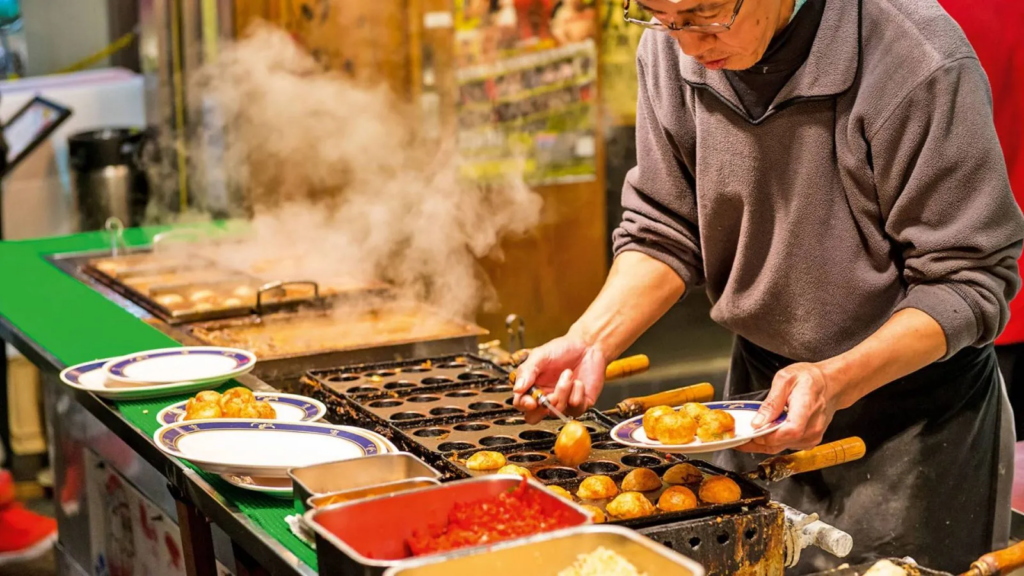
Introduction to Culinary Tourism
In recent years, a unique form of tourism has gained immense popularity – Culinary Tourism. It’s not just about sightseeing; it’s a journey of flavors, textures, and cultural exploration through food. In this article, we’ll delve into the fascinating world of culinary tourism and explore its various facets.
The Palate Explorer’s Handbook: Unveiling the Concept
Culinary Tourism, often referred to as “food tourism,” is an immersive experience where travelers explore the local cuisine of a destination. It goes beyond the usual tourist attractions, offering a deeper understanding of the culture through its gastronomy. The Palate Explorer’s Handbook is your guide to this delightful journey.
Benefits of Culinary Tourism
Exploring Local Flavors
One of the primary advantages of culinary tourism is the opportunity to savor authentic local dishes. It’s a chance to step away from generic fast food and embrace the distinctive flavors that define a region’s identity.
Cultural Immersion through Food
Food is a universal language, and through culinary tourism, travelers can connect with locals on a profound level. Sharing a meal often leads to sharing stories, traditions, and a genuine understanding of the cultural tapestry.
Key Destinations for Culinary Tourism
Italy: Beyond Pasta and Pizza
Italy is a haven for food enthusiasts, offering more than just its renowned pasta and pizza. From regional specialties like risotto in Milan to seafood delights in Sicily, Italy’s diverse culinary landscape is a paradise for the palate.
Thailand: A Spice Haven
For those seeking an explosion of flavors, Thailand is a must-visit. The perfect balance of sweet, salty, sour, and spicy, Thai cuisine is a sensory journey. Street markets in Bangkok and beachside shacks in Phuket provide an authentic taste of Thailand.
Mexico: Tacos and Beyond
Mexican cuisine is synonymous with tacos, but there’s so much more to explore. From the rich mole sauces to the intricate flavors of Oaxacan cuisine, a culinary tour in Mexico promises a fiesta for your taste buds.
The Role of Food Blogs and Social Media in Culinary Tourism
In the digital age, food blogs and social media play a pivotal role in shaping culinary tourism. Travelers often rely on online platforms for recommendations, creating a global community of food enthusiasts eager to share their culinary discoveries.
Planning a Culinary Adventure
Researching Local Cuisines
Before embarking on a culinary adventure, thorough research is essential. Understanding the staple ingredients, traditional cooking methods, and iconic dishes of a region ensures a more enriching experience.
Choosing Authentic Eateries
Venturing off the beaten path to discover local eateries is a hallmark of culinary tourism. Skip the mainstream restaurants and opt for hidden gems where authenticity is served on a plate.
Participating in Cooking Classes
For a hands-on experience, consider joining cooking classes. It’s not just about tasting; it’s about learning the art of preparing local delicacies under the guidance of skilled chefs.
Challenges in Culinary Tourism
Language Barriers
Navigating menus in a foreign language can be challenging, but it’s also part of the adventure. Embrace the unknown, and don’t hesitate to seek assistance from locals eager to share their culinary heritage.
Adapting to Local Food Habits
Culinary tourism may expose you to unfamiliar ingredients or dining customs. Embrace the opportunity to step out of your comfort zone and savor the local experience.
The Evolution of Culinary Tourism Post-Pandemic
The travel landscape has evolved post-pandemic, impacting culinary tourism. Safety measures, digital menus, and a renewed focus on hygiene have reshaped the way travelers engage with food experiences.
Interview with a Culinary Tourist: Personal Experiences
To provide a firsthand perspective, we interviewed a seasoned culinary tourist. From navigating street markets in Marrakech to mastering the art of sushi in Tokyo, their experiences highlight the transformative power of culinary exploration.
Impact on Local Economies and Communities
Culinary tourism isn’t just about indulging in delightful dishes; it also contributes to local economies. By supporting local farmers, markets, and eateries, travelers become integral to the sustainability of the destination.
Sustainable Culinary Tourism Practices
As the world becomes more conscious of sustainable travel, culinary tourism follows suit. From farm-to-table initiatives to reducing food waste, adopting sustainable practices ensures that the joy of culinary exploration doesn’t come at the expense of the environment.
Culinary Tourism and Food Festivals
Food festivals around the world celebrate the diversity of global cuisine. These events are a melting pot of flavors, bringing together culinary enthusiasts, chefs, and food vendors to create an immersive experience for attendees.
Culinary Tourism Trends for the Future
The future of culinary tourism holds exciting possibilities. From virtual food experiences to augmented reality-enhanced dining, technology is set to redefine how we engage with food during our travels.
Conclusion: Savoring the Global Culinary Experience
In the Palate Explorer’s Handbook, culinary tourism emerges as a transformative journey, transcending borders and connecting people through the universal language of food. Whether you’re savoring street food in Bangkok or indulging in fine dining in Paris, each bite is a step into the heart of a culture.



